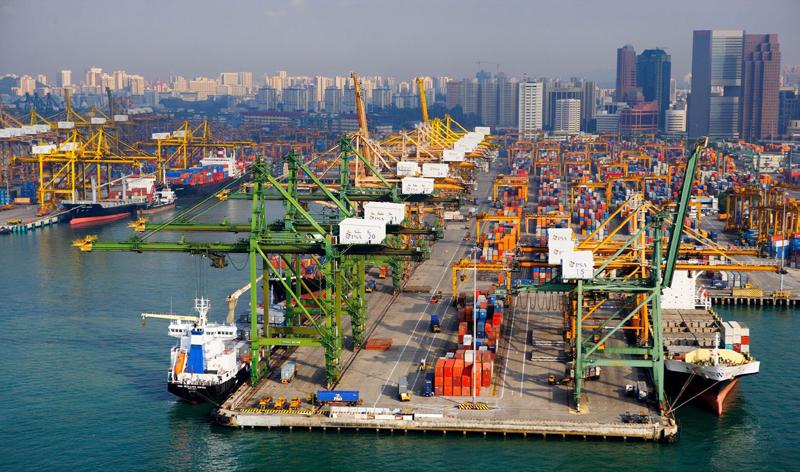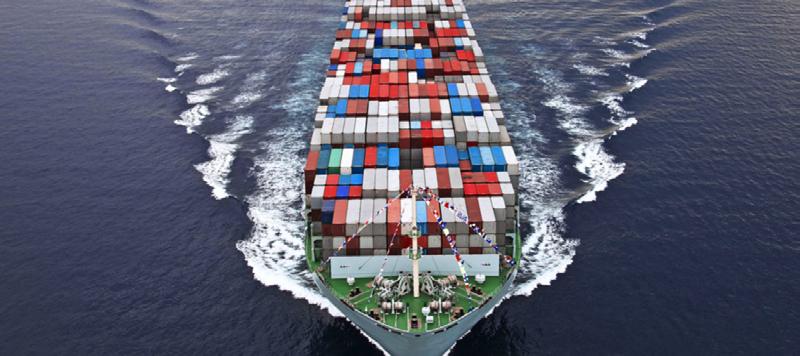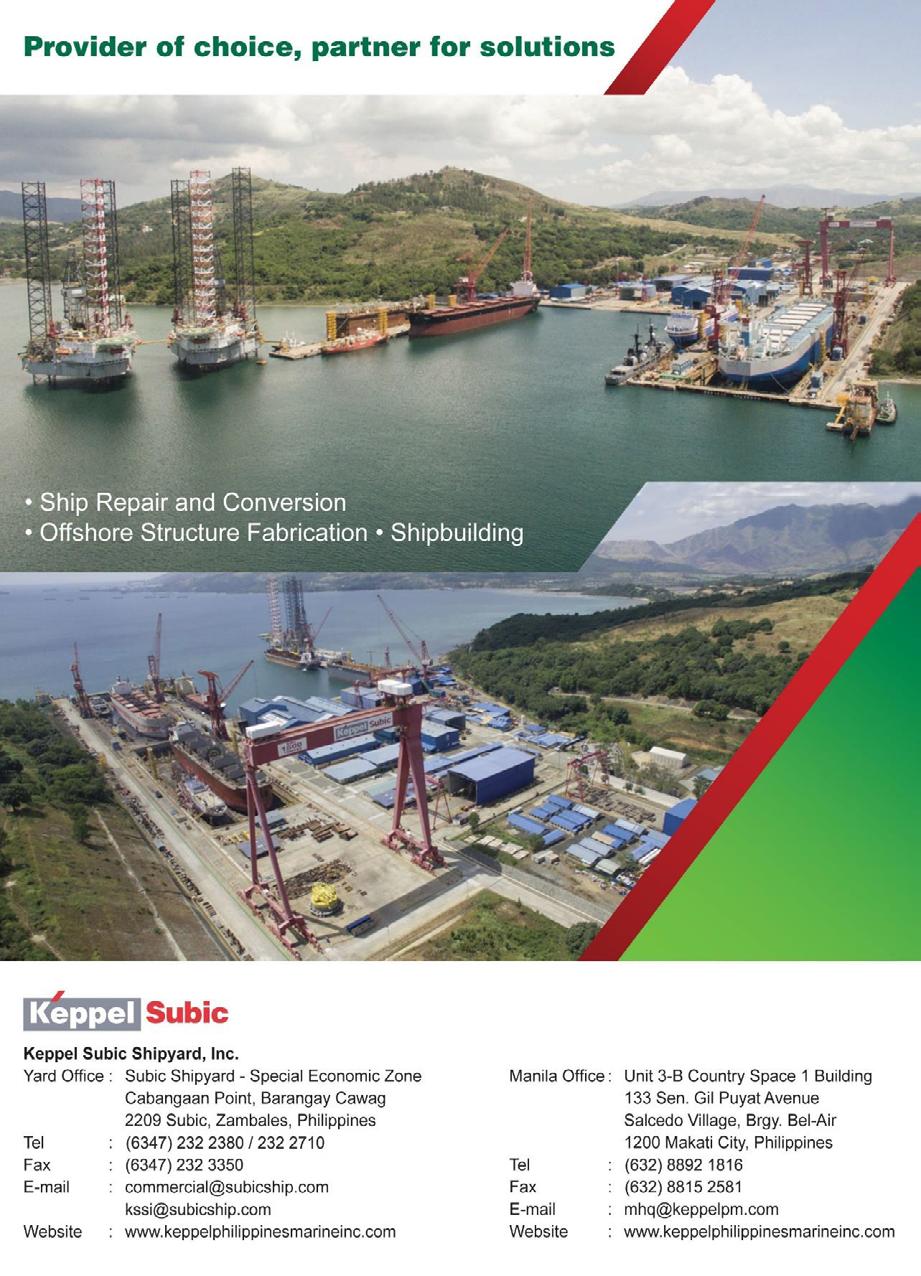
6 minute read
COMMENTARY
SINGAPORE PORTS AND SHIPS ARE TURNING THE TIDE ON CLIMATE CHANGE
The lull in shipping activity, triggered by the COVID-19 crisis, presents an opportunity for the maritime industry to double down on decarbonisation efforts, says Dr Sanjay Kuttan, Executive Director of Singapore Maritime Institute.
SINGAPORE: Singapore’s two main ports, PSA Container and Jurong Port, are living labs for green technologies.
Jurong Port boasts of a 9.65 megawatt-peak solar photovoltaic system. Mounted on warehouse rooftops, it is the world’s largest solar installation in a port. Part of the electricity generated is used for port operations, while the rest is supplied to the national power grid.
The port is also testing an artificial intelligence (AI)-driven Smart Multi-Energy System, including a direct-current warehouse microgrid system, which will further reduce its carbon footprint.
Jurong Port is also home to the world’s first green berths – made of recycled concrete from existing berths and yards.
Furthermore, PSA has started to electrify and automate its cranes and ground vehicles. Once complete, the port operator will have the world’s largest fleet of automated guided vehicles powered by batteries instead of diesel. 26 The COVID-19 crisis has led to a lull in shipping activity presenting an opportunity for the maritime sector to accelerate decarbonisation efforts and build a greener supply chain.
Globally, the maritime sector accounts for 2 to 3 per cent of greenhouse gas emissions. Recognising its significant environmental impact, the International Maritime Organization (IMO) has ratified greenhouse gas reduction targets: 40 per cent by 2030 and 50 per cent by 2050 from 2008 levels.
CLEANER HARBOUR CRAFTS
Over the past decade, the global maritime sector has been making efforts to reduce the carbon footprint of vessels. New ships must comply with the IMO’s Energy Efficiency Design Index – a set of regulations for the vessel to be designed and built for maximum energy efficiency since 2011.
The IMO also implemented the Ship Energy Efficiency Management Programme that same year, which provides a framework for operating ships and fleets to improve energy efficiency. These programmes develop guidelines to drive down energy consumption to a minimum for each vessel type.
These energy efficiency principles can be also applied to Singapore’s 2,300 licensed harbour crafts that provide goods and services to ships calling at ports.
Seven in 10 harbour crafts are motorised, ranging from ferries, tugs, bunkers, and launches. Most, if not all, are burning marine diesel, contributing to our national carbon footprint.
The opportunity to decarbonise these vessels through electrification or the use of sustainable biofuels is significant. The local marine environment will also benefit from reduced air and noise pollution.
The Maritime and Port Authority of Singapore (MPA) has also worked towards the development of liquefied natural gas (LNG)-fuelled tugs, which are now operational and contributing to the sector’s decarbonisation efforts.
LNG is generally accepted as having a lower carbon footprint than marine diesel. There are less than three vessels currently in operation but with better hybrid designs for cost and performance optimisation, more can be expected.
CLEANER BUNKER FUEL
Singapore, one of the world’s busiest port with 1,000 ships visiting each day, is a key bunkering hub. It delivered about 48 million tonnes of mostly lowgrade fuel in 2019 – almost half of global demand. Looking into the future, Singapore needs to move away from carbon-intensive fuels to further the decarbonisation efforts across the sector. Other than LNG, new fuels on the horizon include biofuels, methanol, liquid ammonia and liquid hydrogen.
Commentary
Biofuels as a drop-in fuel (mixed with normal fuel), can further reduce the carbon footprint. However, working with original equipment manufacturers and vessel operators is key to honouring warranties and preserving operational reliability.
There are many research and development (R&D) opportunities related to harbour crafts: Power system optimisation, new battery or fuel cell technology, 3D printing of lighter and sturdier propellers and so on.
Domestic yards are headed in this direction. Earlier this year, BH Global, a power system designer and integrator, and Penguin, a ship builder, announced a consortium of partners to build Singapore’s first hybrid-electric fast launch.
In 2018, Norwegian shipping company Norled ordered three hybrid plug-in ropax ferries (which can tap shore-based charging) from Singapore’s

shipbuilder Sembcorp Marine. verify the performance of the fuels for the role of the vessels, engine performance and carbon mitigation impact among other criteria.
Dealing with this new portfolio of fuels will require fresh consideration of new factors.
Product sourcing, verification of “green” status, safety standards for storage and handling and so on are not trivial considerations if Singapore is striving to be the global bunkering hub for green fuels, and to avoid the bunkering infrastructure we invest in ending up as stranded assets.
SINGAPORE: Singapore’s two main ports, PSA Decarbonising the maritime industry will require Container and Jurong Port, are living labs for green bold leadership and mindset changes. technologies. Singapore is also investing and innovating for Jurong Port boasts of a 9.65 megawatt-peak solar a more sustainable future. MPA and its partners photovoltaic system. Mounted on warehouse have set aside S$40 million under the Maritime rooftops, it is the world’s largest solar installation in GreenFuture Fund for research, test-bedding and a port. Part of the electricity generated is used for adoption of low-carbon technologies. port operations, while the rest is supplied to the national power grid. This will contribute towards creating and enabling the adoption of green alternative fuels, The port is also testing an artificial intelligence electrification, and circular economy solutions. (AI)-driven Smart Multi-Energy System, including a direct-current warehouse microgrid system, which Furthermore, the growing investment interest will further reduce its carbon footprint. from venture capitalists, such as Rainmaking and NTU’s EcoLabs Program augurs well for Jurong Port is also home to the world’s first green maritime innovators and start-ups to deliver our berths – made of recycled concrete from existing decarbonisation goals. berths and yards. As Prime Minister Lee Hsien Loong said in his 2019 Furthermore, PSA has started to electrify and National Day rally, climate change is an existential automate its cranes and ground vehicles. Once issue for us all. Decarbonising the shipping sector complete, the port operator will have the world’s is key for Singapore to maintain its global maritime largest fleet of automated guided vehicles powered leadership and keep Singapore’s economy humming by batteries instead of diesel. for the prosperity of all. The writer Dr Sanjay C Kuttan is Executive Director of Singapore Maritime Institute and the views expressed here do not necessarily represent the views of Maritime Voice Indonesia.
ADVERTISE WITH US !
REACH OUT TO MORE THAN 10,000 SUBSCRIBERS IN MARITIME, SHIPBUILDING, OFFSHORE
& NAVAL INDUSTRIES !
CONTACT US : FIREWORKS BUSINESS INFORMATION PHILIPPINES c/o Fireworks Trade Exhibitions & Conferences Philippines, Inc.
12th Flr., The Trade & Financial Tower U1206 32nd Street & 7th Avenue, Bonifacio Global City Taguig City, Metro Manila 1634 Philippines
Email : phil@asiafireworks.com Phone : (+632) 7902 0900 ext 226 Whatsapp : (+63) 9277 040 888 Website : www.philmarinenews.com











